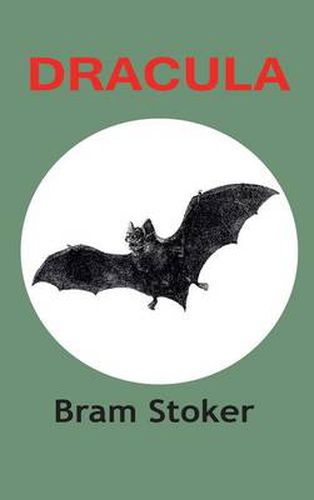Readings Newsletter
Become a Readings Member to make your shopping experience even easier.
Sign in or sign up for free!
You’re not far away from qualifying for FREE standard shipping within Australia
You’ve qualified for FREE standard shipping within Australia
The cart is loading…






This title is printed to order. This book may have been self-published. If so, we cannot guarantee the quality of the content. In the main most books will have gone through the editing process however some may not. We therefore suggest that you be aware of this before ordering this book. If in doubt check either the author or publisher’s details as we are unable to accept any returns unless they are faulty. Please contact us if you have any questions.
Before writing Dracula, Stoker spent seven years researching European folklore and stories of vampires, being most influenced by Emily Gerard’s 1885 essay, Transylvania Superstitions . Despite being the most widely known vampire novel, Dracula was not the first. It was preceded and partly inspired by Sheridan Le Fanu’s 1871 Carmilla , about a lesbian vampire who preys on a lonely young woman, and by Varney the Vampire, a lengthy penny dreadful serial from the mid-Victorian period by James Malcolm Rymer. The image of a vampire portrayed as an aristocratic man, like the character of Dracula, was created by John Polidori in The Vampyre (1819), during the summer spent with Frankenstein creator Mary Shelley, her husband, the poet Percy Bysshe Shelley and Lord Byron in 1816. The Lyceum Theatre, where Stoker worked between 1878 and 1898, was headed by the actor-manager Henry Irving, who was Stoker’s real-life inspiration for Dracula’s mannerisms and who Stoker hoped would play Dracula in a stage version. Bram Stoker was an Irish novelist and short story writer, During his lifetime, he was better known as personal assistant of actor Henry Irving and business manager of the Lyceum Theatre in London, which Irving owned.
$9.00 standard shipping within Australia
FREE standard shipping within Australia for orders over $100.00
Express & International shipping calculated at checkout
This title is printed to order. This book may have been self-published. If so, we cannot guarantee the quality of the content. In the main most books will have gone through the editing process however some may not. We therefore suggest that you be aware of this before ordering this book. If in doubt check either the author or publisher’s details as we are unable to accept any returns unless they are faulty. Please contact us if you have any questions.
Before writing Dracula, Stoker spent seven years researching European folklore and stories of vampires, being most influenced by Emily Gerard’s 1885 essay, Transylvania Superstitions . Despite being the most widely known vampire novel, Dracula was not the first. It was preceded and partly inspired by Sheridan Le Fanu’s 1871 Carmilla , about a lesbian vampire who preys on a lonely young woman, and by Varney the Vampire, a lengthy penny dreadful serial from the mid-Victorian period by James Malcolm Rymer. The image of a vampire portrayed as an aristocratic man, like the character of Dracula, was created by John Polidori in The Vampyre (1819), during the summer spent with Frankenstein creator Mary Shelley, her husband, the poet Percy Bysshe Shelley and Lord Byron in 1816. The Lyceum Theatre, where Stoker worked between 1878 and 1898, was headed by the actor-manager Henry Irving, who was Stoker’s real-life inspiration for Dracula’s mannerisms and who Stoker hoped would play Dracula in a stage version. Bram Stoker was an Irish novelist and short story writer, During his lifetime, he was better known as personal assistant of actor Henry Irving and business manager of the Lyceum Theatre in London, which Irving owned.